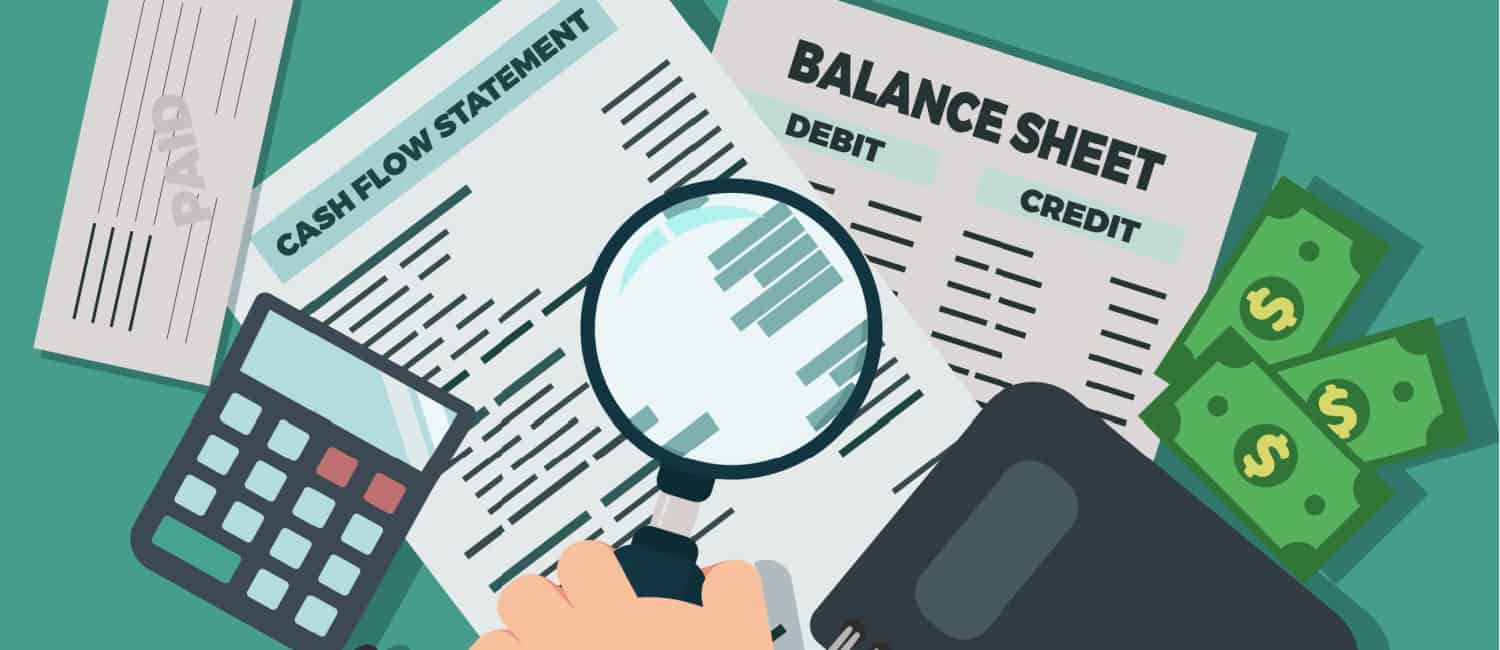The saying ‘cash is king’ has been around for a long time – and that’s because, in many ways, it’s true. In the business world, cash flow is critical. Have you heard of any companies going out of business because they had too much cash? Probably not.
In this episode of Whiteboard Thursday, Nick Campion explains what cash flow is. He also reveals 10 ways to quickly improve your business’ cash flow, taking the stress out and building sizeable cash reserves in your company’s bank account.
Key Takeaways
- Mastering your business’ cash flow management can help you better predict your finances, cover expenses, and operate more sustainably.
- Optimising your inventory, cutting unnecessary costs, and renegotiating payment terms can help make your money work harder.
- Use a cash flow statement and explore working capital credit lines to improve your business’ cash flow management.
Video transcript
Hi there, Nicholas Campion here from 1st Formations – the UK’s leading company formation agent. Today, I want to walk you through how you can improve your company’s cash flow management.
This video is part of our Whiteboard Thursday video series where we take a look at all of the aspects of running a limited company, here in the UK. So, if you want to keep up to date with our business advice, and the latest content on company shares, finance, and tax – then hit that subscribe button.
But for now – let’s get started!
Before we dive into our tips on improving your company’s cash flow, let’s take a look at what we mean when we talk about cash flow.
So, cash flow is basically the net amount of cash and cash equivalents being transferred into and out of your business. Cash equivalents are just short-term securities or assets that could be quickly liquidated and turned into cash if your business ever really needed the money.
Why is it important to keep tabs on your cash flow? First and foremost, it helps you predict how much money your business is likely to have access to in the future.
But in addition to forecasting, knowing your company’s cash flow will help you to understand and pinpoint how much money your business is going to need to cover all of its debts. That might include the cash you need to pay suppliers, meet payroll obligations, utilities for any company premises, and everything in between.
- 15 money-saving tips for small businesses that you need to know
- 7 tips for managing money when starting up a business
- 13 allowable expenses for limited companies to claim
Simply put, to responsibly manage your company’s operations, you need to know how much money is coming in and out of your business. That money is your cash flow, and the better you are at managing it, the harder your company’s money will be working for you.
So, now we know what cash flow is. How do you improve it?
We know that no two companies are alike, and so each and every business needs to explore a range of options to find the perfect cash flow management regime for their business. But, generally speaking, most companies can (and will) benefit from trying these 10 tips.
Tip 1: Gain control of your inventory
Whenever your company has too much inventory, you’re needlessly tying up cash.
For example, let’s say you run a retail clothing shop, and you tend to sell around 200 jumpers per month. So, when you’re ordering more stock from your supplier, it wouldn’t make any sense to buy 800 jumpers, would it? That’s because you know your chances of selling 800 jumpers in a month is totally unrealistic. You’d just be turning your company’s liquid cash into stock that you can’t move.
That’s how you tie up cash, and it can put you in a real bind if unforeseen circumstances strike and you need to spend money on some other pressing matter.
So, try to avoid falling into this inventory trap by keeping better tabs on your stock. As a company manager, you should always know how much inventory you’ve got and how much you need.
If you need a hand, there are plenty of amazing inventory management solutions worth checking out that can help you digitise your inventory so that you’re always able to see what you’ve got in real time.
Tip 2: Collect receivables
All of the money that your company is owed but hasn’t received from customers, clients, or other businesses falls under the umbrella of accounts receivable. You’ll often hear accountants refer to accounts receivable as your company’s AR.
AR represents a legally enforceable claim your business has for goods or services supplied that remain unpaid.
When you’re unable to collect those receivables, it can wreak havoc on your company’s cash flow. That’s because you’ve already provided your time or stock to a client but haven’t been compensated.
If worse comes to worst, you can pursue legal action to get paid. But this will often damage your relationship with suppliers or clients, and you can incur a number of legal costs in the process.
Instead, there are plenty of diplomatic ways you can go about collecting money owed, without upsetting clients or sacrificing customer relationships. For example, you can set up a collections schedule that will help you to follow up on non-payments, send auto-reminders to your business clients, or even adopt an invoice management solution that will digitise this process.
Tip 3: End business relationships that aren’t paying off
Have you got a client or customer who’s constantly paying late and messing up your company’s cash flow? Well, it might be time to cut ties with that client.
Nobody wants to rock the boat, and the thought of dropping a client can be stressful – particularly if your business is small and you haven’t got that many customers to begin with. But in the long run, you might find it’s better for your company to cut ties with a delinquent client rather than keep them on and constantly have to chase them for payment.
You may lose out on some income in the short term, but in the long run, you’ll be able to better manage your cash flow by focusing on clients that pay on time. That way, you’ll have a better idea of your outgoing expenses, receivables, inventory, and more.
Tip 4: Find out where you can cut some costs
OK, so this one sounds a bit obvious, but if you do a deep dive into your company expenses, I’m sure you’d be shocked to find out how much money you’re wasting on unnecessary expenses.
Perform an audit and take a look at all of your company’s recurring monthly, quarterly and annual expenses. Look at what’s essential, identify anything that’s actually a luxury and track down all the non-essentials that are eating away at your company’s cash.
Some items may be very easy to identify. For example, you may figure out that you’ve leased four vans for company use, but you only have two technicians who actually need to go out on jobs. Or maybe you’ve taken out subscriptions to a number of services that nobody in the company uses anymore.
Other ways to cut costs may require some research. For example, could you save money on the heating or electricity bills for your company premises by switching suppliers? Or if you’ve got any outstanding company loans or leases, would it be possible to save money by negotiating terms or refinancing?
This sort of auditing shouldn’t be a one-off exercise to cut costs. You should probably be reviewing overheads on a quarterly or even monthly basis, to ensure your accounts payable are all up to date and are 100% necessary for company operations.
By cutting costs, you’ll be able to free up company cash and give your cash flow a healthy boost.
Tip 5: Use a cash flow statement
The best way to manage your company’s cash flow is to make sure you’ve always got eyes on it. And if you’re after enhanced visibility, you should be using a cash flow statement as part of a regular reporting regime.
Cash flow statements are simple reports that show you exactly how much cash you’ve received, how much cash has been paid out and how much you’ve got left at the end of each month.

A cash flow statement is crucial to your success because it’s a clear snapshot of how your company is performing financially. At the end of each period you’re tracking, all you need to do is calculate the difference between your total sales and total costs. The number you’re left with will tell you whether your company is making money or losing money.
But cash flow statements go a lot further than that.
By keeping an up-to-date cash flow statement, you’ll also be able to know what happens to your company’s cash when a client pays a bill, what happens when your business needs to buy supplies, and when and whether you can afford to take on independent contractors, and everything in between.
Many companies will update their cash flow statement using weekly or even daily reports – and there are a number of treasury and accounting software solutions that can perform these updates and reports automatically.
Tip 6: Set up a working capital line of credit
If you’ve performed some regular cash flow reporting and find that your company is suffering from a sustained but temporary cash flow shortage, you might want to think about setting up a working capital line of credit.
A working capital line of credit is kind of like a business loan, but companies that take this credit on do it specifically to maintain business operations, rather than to invest in something.
Lines of credit tend to let companies that can demonstrate they’re in a short-term cash flow bind borrow a certain amount, as long as it’s paid back within a specified period of time. All you pay is the interest on the amount borrowed.
Working capital lines of credit are also preferable to loans in some cases because your company only has to pay back what they end up using. That means if you’re offered £20,000 in credit but only use £10,000, you’ve only got to pay back £10,000.
There are a number of specialist business finance companies that offer working lines of credit, but you may also be able to approach your current bank or lender.
Tip 7: Reduce the credit period that you offer to customers
We know this isn’t going to be the most popular move from the point of view of your customers.
But by asking your customers and clients to pay for goods and services rendered at a faster rate, you’ll be able to accelerate your cash inflows. This will lead to a healthier cash position that’s easier to manage both in the short term and the long term.
It’s important to bear in mind that reducing the credit period you make available to clients doesn’t actually guarantee you’re going to get the money quicker. If you’re making unrealistic payment requests, it may just lead to more customers than ever going into delinquency.
That’s why it’s important to strike a reasonable balance here. You may also want to use a loss leader strategy, like offering a prompt payment discount to customers who pay on time (or early).
Tip 8: Get your customers to pay by direct debit or a standing order
This is possibly the single most effective way of improving a company’s cash flow.
Instead of waiting for payment some 30 or 60 days after issuing an invoice or delivering a service, why not turn this on its head and create a regular payment arrangement on a monthly basis by direct debit, standing order, or recurring card payment – thereby eliminating the credit period and greatly improving your cash inflows?
It’s worth noting that creating regular monthly payment arrangements can also be beneficial to your customers. For example, accountancy firms usually bill clients on an annual basis, so by setting up a monthly direct debit, it will spread the cost burden over a period of 12 payments, rather than being faced with a large one-off payment.
Also, a further advantage is that you will be notified on the same day a customer cancels their Direct Debit instruction, so you will not have to wait until the payment fails before you take action and/or stop providing your products and services.
Tip 9: Raise company prices
This is another option that might scare some business owners. There’s a natural fear that higher prices will inevitably lead to a lower sales volume. But that’s not necessarily true and increasing prices certainly will boost your cash flow.
You’ve just got to be very careful in terms of how you go about raising prices.
First, you might need to conduct some market research to get a better idea of what your competitors are charging and how those prices relate to your own. Try to get an idea of how high customers are willing to go without abandoning carts or taking their business elsewhere.
This will normally be a case of trial and error. You may want to pilot price increases on a small number of products at particular locations to test the water. That will give you an idea of whether increasing prices is sustainable.
Tip 10: Avoid buying – lease instead
This might seem a little bit counterintuitive at first glance. After all, rental or lease payments are often higher over the lifetime of a piece of equipment than the price of buying that equipment outright.
And that’s certainly true if you’re only looking at your company’s bottom line. But if you want to unlock money and improve your day-to-day cash flow, leasing makes perfect sense.
When you lease supplies or equipment, you pay to use it in smaller increments (normally monthly payments). That’s way cheaper than purchasing it outright. So, although it costs you more in the long run, it leaves your company with more money in the bank in the short term.
In most tax jurisdictions, lease payments are also considered a qualified business expense – that means they’re tax-deductible.
Start improving your business’ cash flow
In this video, we’ve covered 10 ways your company may want to consider improving its cash flow management.
But remember: no two businesses are alike, and so finding the perfect cash flow management strategy may be a case of trial and error. Just take your time, be patient and when in doubt, always consult an accounting professional.
If you have any questions, please leave a comment, and don’t forget, if you want to be the first to receive more videos just like this one, then please hit the subscribe button.
Explore our YouTube channel for more expert insights, and check out our blog for more advice on managing and scaling your small business.
Please note that the information provided in this article is for general informational purposes only and does not constitute legal, tax, or professional advice. While our aim is that the content is accurate and up to date, it should not be relied upon as a substitute for tailored advice from qualified professionals. We strongly recommend that you seek independent legal and tax advice specific to your circumstances before acting on any information contained in this article. We accept no responsibility or liability for any loss or damage that may result from your reliance on the information provided in this article. Use of the information contained in this article is entirely at your own risk.











Join The Discussion